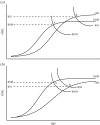The effect of insularity on avian growth rates and implications for insular body size evolution
- PMID: 30963869
- PMCID: PMC6367169
- DOI: 10.1098/rspb.2018.1967
The effect of insularity on avian growth rates and implications for insular body size evolution
Abstract
Island populations often differ in consistent ways from their mainland counterparts with respect to their ecology, behaviour, morphology, demography and life-history characteristics; a set of changes referred to as the 'island syndrome'. To understand the ecological and evolutionary drivers of the island syndrome requires characterization of suites of interacting traits. While patterns in some types of traits, e.g. body size, are well characterized across a range of taxa, key gaps remain. Growth rate is one such trait, being an important determinant of both increases and decreases in body size, and can vary with changes in predation pressure and food limitation; two factors that are known to differ between mainland and island environments. Using a phylogenetic meta-analytic approach, we characterize differences in growth rates among mainland and island altricial bird populations, controlling for environmental factors. We found a trend towards slower growth on islands in small-bodied (less than 1 kg) bird species. This is consistent with the idea that the pattern of body size increases in small-bodied island colonists is associated with the evolution of slower growth combined with shifts in age and size at maturity in relaxed predation regimes.
Keywords: bird; growth rates; island biology; island syndrome; life history; meta-analysis.
Conflict of interest statement
We declare we have no competing interests.
Figures


References
-
- Grant PR. 1998. Patterns on islands and microevolution. In Evolution on islands (ed. Grant PR.), pp. 1–17. New york, NY: Oxford University Press.
-
- Losos JB, Ricklefs RE. 2009. The theory of island biogeography revisited. Princeton, NJ: Princeton University Press.
-
- Blondel J. 2000. Evolution and ecology of birds on islands: trends and prospects. Vie milieu 50, 205–220.
-
- MacArthur RH, Wilson E. 1967. The theory of island biogeography. Princeton, NJ: Princeton University Press.
Publication types
MeSH terms
Associated data
LinkOut - more resources
Full Text Sources

